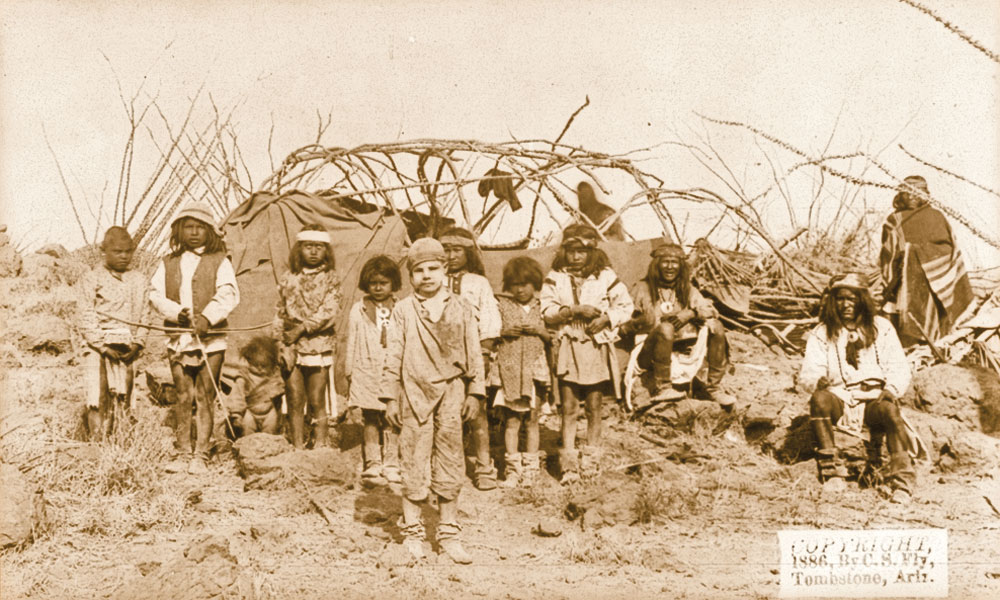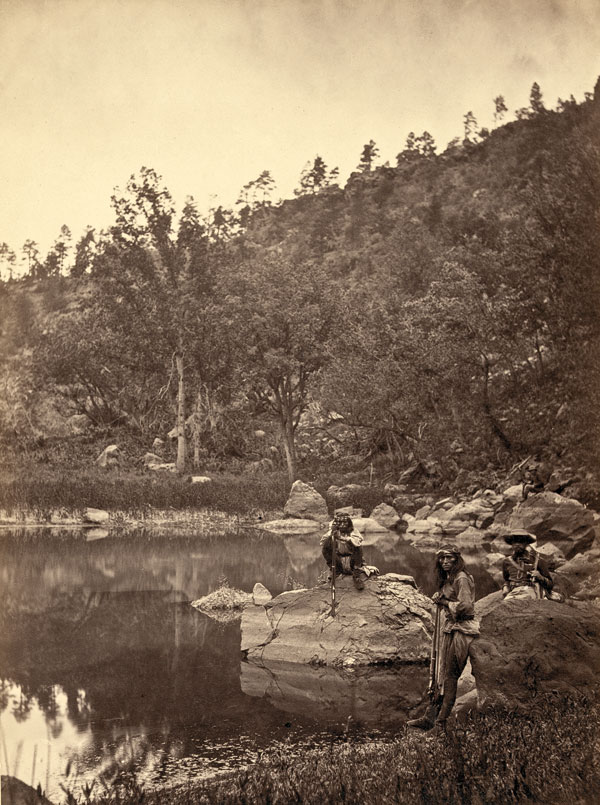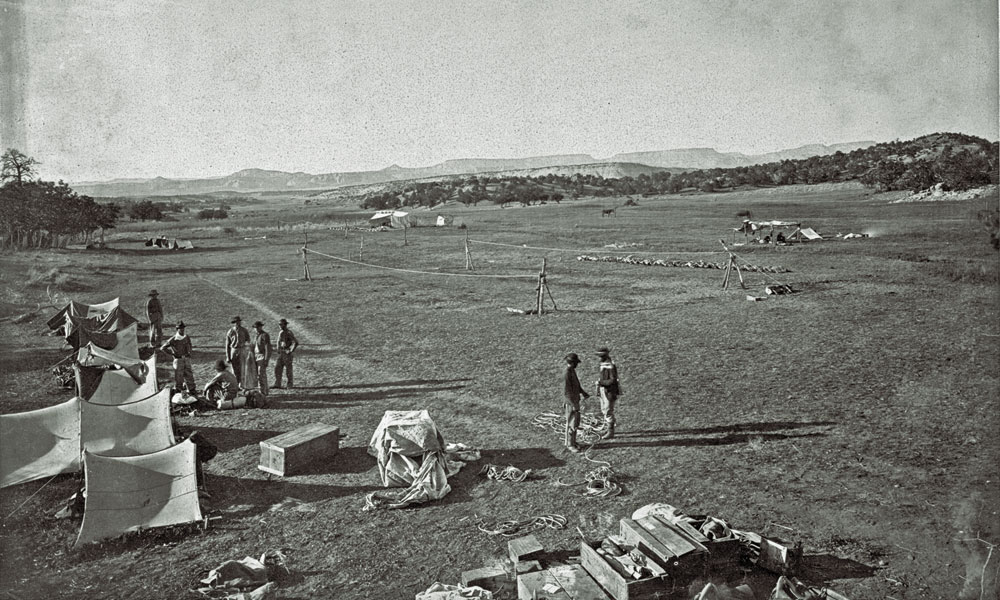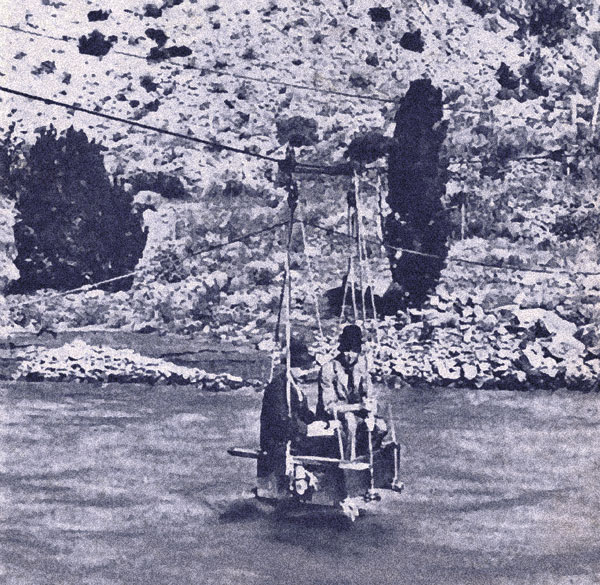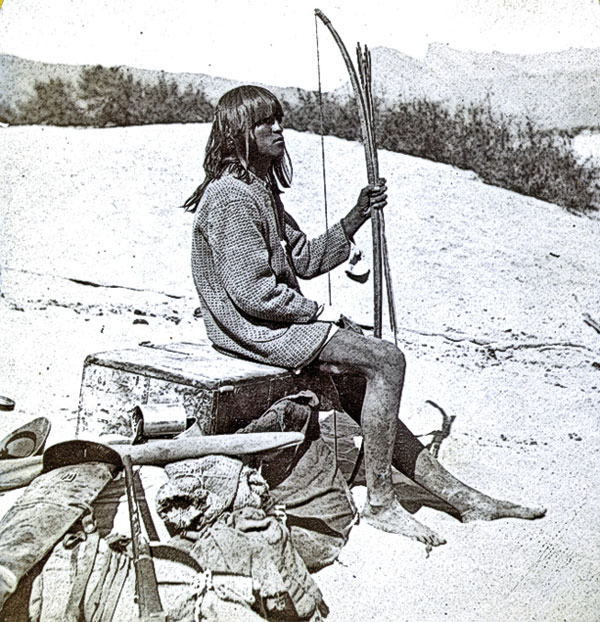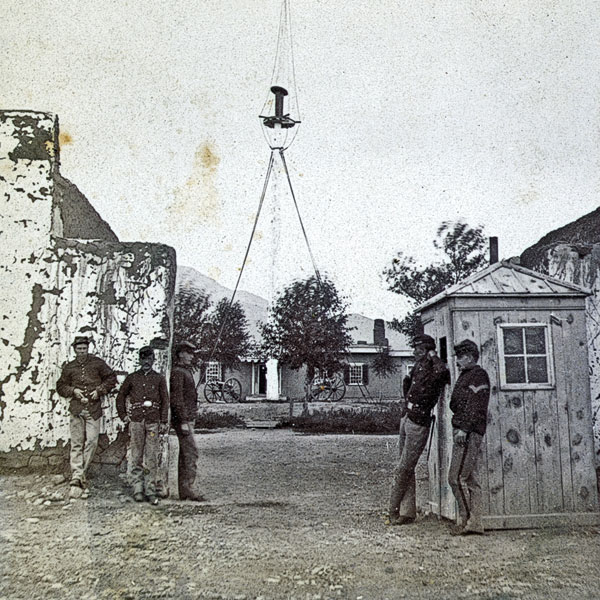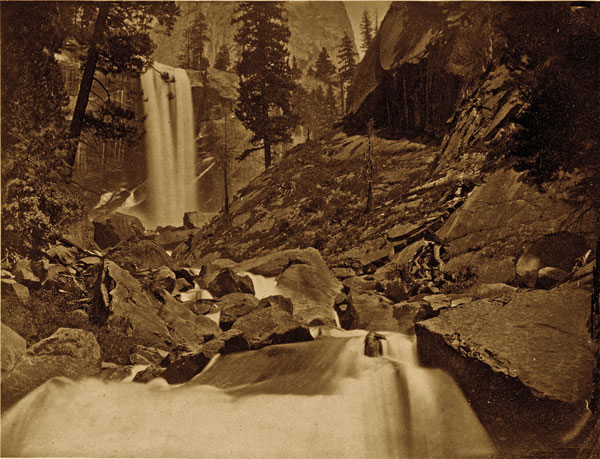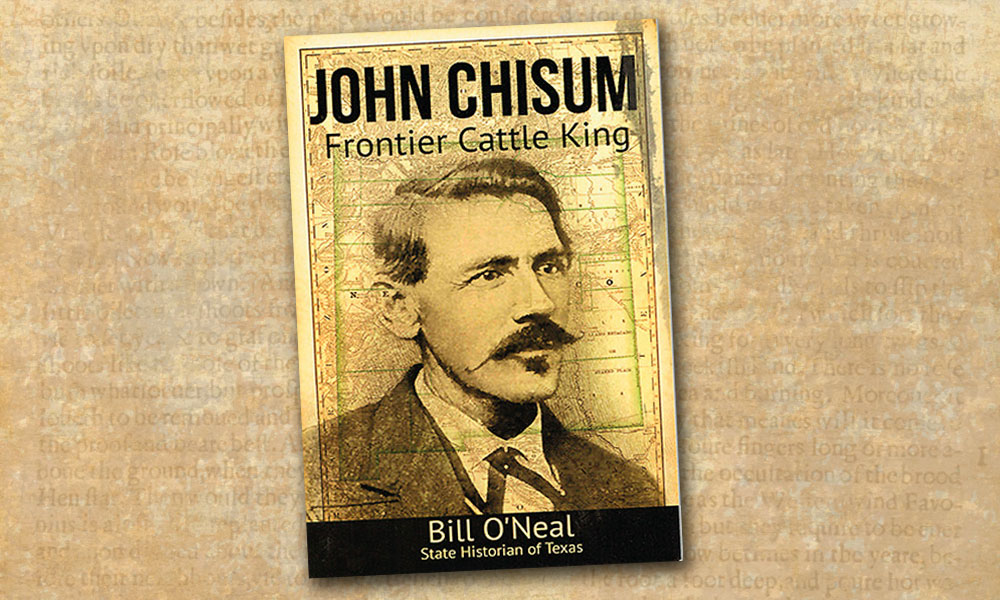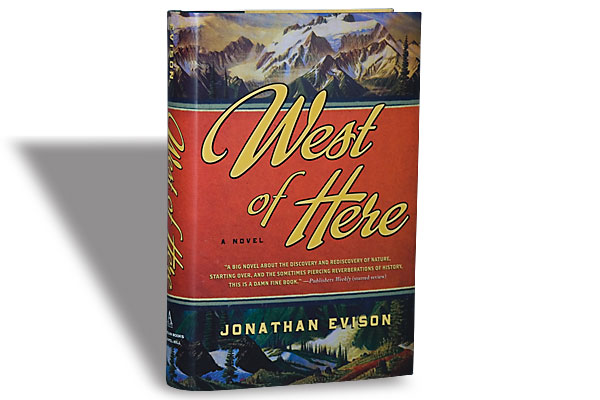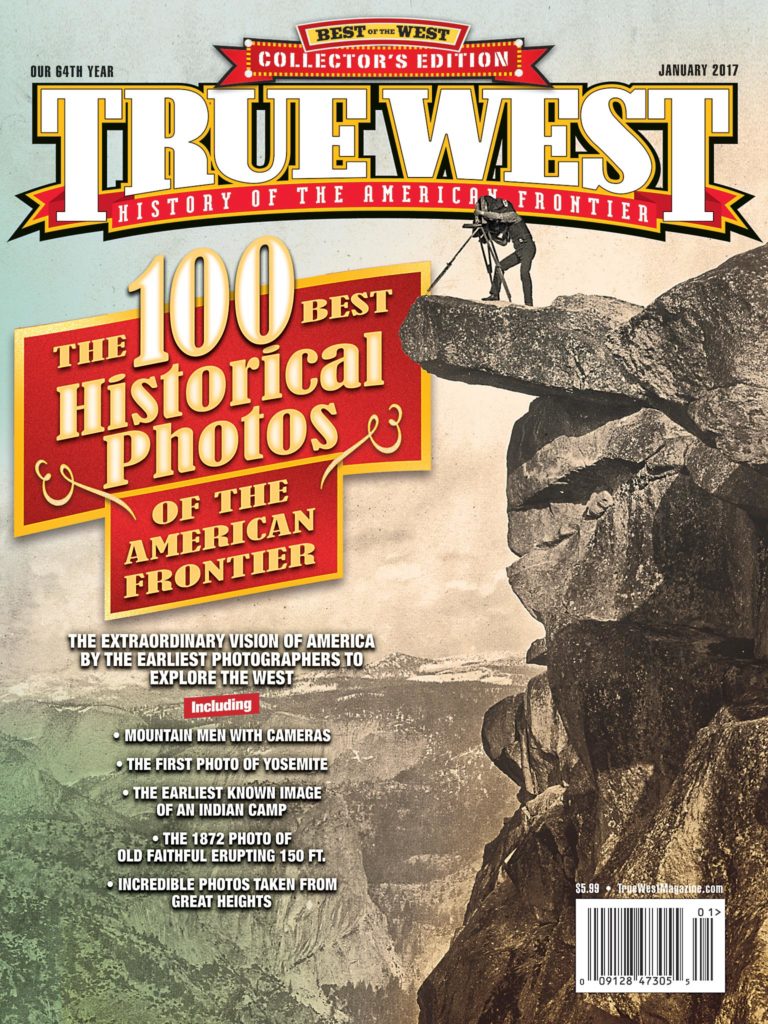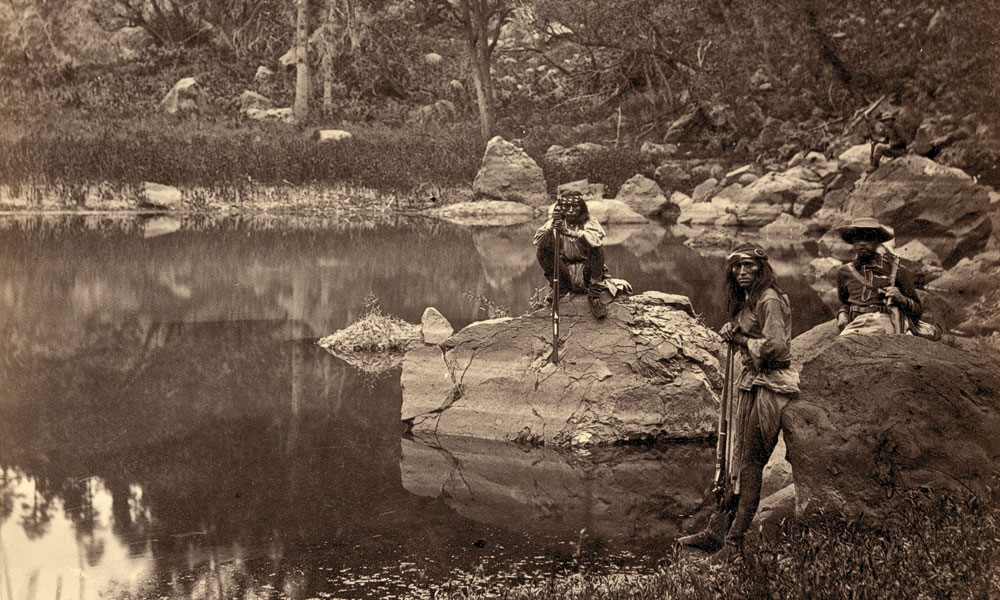 When historians review the year 2016 in publishing, will they discover themes in Western history and fiction that reflected the national turmoil and tumultuous political year that preceded the quadrennial contest for the White House? I would argue that today’s authors have not—and cannot—divest themselves from the present. I believe that the best publications of novelists and historians in 2016 were consciously and subconsciously influenced by our troubled era of instantaneous information.
When historians review the year 2016 in publishing, will they discover themes in Western history and fiction that reflected the national turmoil and tumultuous political year that preceded the quadrennial contest for the White House? I would argue that today’s authors have not—and cannot—divest themselves from the present. I believe that the best publications of novelists and historians in 2016 were consciously and subconsciously influenced by our troubled era of instantaneous information.
As futurist Alvin Toffler, who died June 27, 2016, prophesied in his 1970 masterpiece Future Shock: “In our lifetime the boundaries have burst. Today the network of social ties is so tightly woven that the consequences of contemporary events radiate instantaneously around the world.…
“Indeed, not only do contemporary events radiate instantaneously—now we can be said to be feeling the impact of all past events in a new way. For the past is doubling back on us. We are caught in what might be called a ‘time skip.’”
Toffler was correct in writing that “the past is doubling back on us.” Paul Andrew Hutton’s The Apache Wars: The Hunt for Geronimo, the Apache Kid, and the Captive Boy Who Started the Longest War in American History is True West’s best book of the year, but Hutton is also True West’s best author of 2016. The University of New Mexico professor carries the Guidon for an extremely strong set of biographies and historical syntheses of our post-Civil War Western history that doubles the past back at us in 2016. Hutton’s brilliance as a historian shows in that The Apache Wars is not politically provocative, nor does it proselytize his conclusions the wars were catalysts of political or social change. Instead, Hutton allows the facts of the Apache-American-Mexican border war to tell the story of one of the most chronicled American wars—yet, I believe, one of the least understood international wars. This war was fought with such brutality and heinous civilian and battlefield atrocities that 130 years after Geronimo’s surrender in August 1886, the modern border issues between Mexico and the United States have double-backed on both nations in what we might truly call a “time skip.” With succinctness and clarity, Hutton leaves the reader of The Apache Wars with a sense of ancient déjà vu. One feels that the tragedy of the Mexican-Apache-American war is not just an anecdotal conflict unique to North American history, but that in the world today it continues to manifest on a deadly, daily basis in a perverse ingemination of human behavior.
Amidst the gravitas of the past year’s prose, two publishing trends of 2016 non-fiction also must be noted: “Law and Order” and American Indian History dominated the catalogues, and are reflected in separate Best of the Year categories. In Old West and modern Western fiction, novelists have continued to mine the themes of Joseph Campbell’s “hero’s
journey” for inspiration, and channel William Shakespeare’s dramatic understanding that the flawed lives of historical characters also make the best dramatic players, whether in lead or supporting roles.
Standing on the same “Best of 2016” shelf with Hutton’s The Apache Wars are five books—and five authors— who I believe are “time-skipping”—resetting the boundaries of Old West history with theses, topics and biographies that are accessible and relevant to 21st- century readers: Peter Cozzens’ The Earth is Weeping: The Epic Story of the Indian Wars for the American West; Joe Jackson’s Black Elk: The Life of an American Visionary; John Boessenecker’s Texas Ranger: The Epic Life of Frank Hamer: The Man Who Killed Bonnie and Clyde; Ron Hansen’s The Kid; Peter H. Hassrick’s (editor) Frederick Remington: A Catalogue Raissone II; and Marian Wardle and Sarah E. Boehme (editors) Branding the American West: Paintings and Films, 1900-1950.
BEST AUTHOR AND NON-FICTION BOOK OF THE YEAR
The Apache Wars: The Hunt for Geronimo, the Apache Kid, and the Captive Boy Who Started the Longest War in American History by Paul Andrew Hutton (Crown)
The strength of Professor Paul Andrew Hutton’s The Apache Wars is that it is both the new baseline synthesis for students and historians of U.S.-Apache history and those researching and analyzing the geo-political history, and the present-day multi-national international border wars.
Best of the Rest:
1. Frontier: Eternity Street: Violence and Justice in Frontier Los Angeles by John Mack Faragher (WW Norton)
2. Fur Trade: Hugh Glass: Grizzly Survivor by James D. McLaird (South Dakota Historical Society Press)
3. Indian Wars: Powder River: Disastrous Opening of the Great Sioux War by Paul L. Hedren (University of Oklahoma Press)
4. Military: Fighting for Uncle Sam: Buffalo Soldiers in the Frontier Army by John P. Langillier (Schiffer Military History)
5. Women/Minorities: Sweet Freedom’s Plains: African Americans on the Overland Trails, 1841-1869 by Shirley Ann Wilson Moore (University of Oklahoma Press)
BEST BIOGRAPHY
Black Elk: The Life of an American Visionary by Joe Jackson (Farrar, Straus and Giroux)
With access to family members of Lakota spiritual leader Black Elk, investigative journalist-historian Joe Jackson’s talents as a writer, interviewer and historian are all on full-display in Black Elk, the most evocative, empathetic and comprehensive biography ever written about the Sioux holy man.
Best of the Rest:
1. Law and Order: Pat Garrett: The Man Behind the Badge by W.C. Jameson (Taylor Trade Publishing)
2. Indian Wars: “Hang Them All”: George Wright and the Plateau Indian War by Donald Cutler (University of Oklahoma Press)
3. Texas Rangers: Whiskey River Ranger: The Old West Life of Baz Outlaw by Bob Alexander (University
of North Texas Press)
4. American Empire: Splendid Savage: The Restless Life of Frederick Russell Burnham by Steve Kemper (WW Norton)
5. Women: Wealth Woman: Kate Carmack and the Klondike Race for Gold by Deb Vanasse (The University
of Alaska Press)
BEST AMERICAN INDIAN HISTORY
The Earth is Weeping: The Epic Story of the Indian Wars for the American West by Peter Cozzens (Alfred A. Knopf)
Peter Cozzens’ The Earth is Weeping is the most comprehensive history of the post-Civil War American conflicts with the Western Indian nations written to date. Cozzens’ research and conclusions will quickly become one of the favored textbooks for students of past and present Western American Indian history.
Best of the Rest:
1. Indian Memoir: The Life of Ten Bears: Comanche Historical Narratives, collected by Francis Joseph Attocknie, edited with an introduction by Thomas W. Kavanagh (University of Nebraska Press)
2. Military Memoir: Sign Talker: Hugh Lenox Scott Remembers Indian Country edited by R. Eli Paul (University of Oklahoma Press)
3. Indian Wars: The Terrible Indian War of the West: A History from the Whitman Massacre to Wounded Knee, 1846-1890 by Jerry Keenan (McFarland)
4. Relocation: Rivers of Sand: Creek Indian Emigration, Relocation & Ethnic Cleansing in the American South by Christopher D. Haveman (University of Nebraska Press)
5. Industrialization: The Railroad and the Pueblo Indians: The Impact of the Atchison, Topeka and Santa Fe on the Pueblos of the Rio Grande, 1880-1930 by Richard H. Frost (The University of Utah Press)
BEST LAW AND ORDER HISTORY
Texas Ranger: The Epic Life of Frank Hamer: The Man Who Killed Bonnie and Clyde by John Boessenecker (Thomas Dunne Books)
Western historians who draw a line in the sand in 1890, 1900 or even 1920, as the proverbial “End of the Old West” forgot to tell that to Texas lawman Frank Hamer, who was born in the era of steam engines in 1884 and died in the midst of the Atomic Age in 1955. Boessenecker proves conclusively that the tighter we tie the noose on Western history, the less we understand its importance to the present—and future—West.
Best of the Rest:
1. Texas Rangers: Texas Ranger Tales: Hard-Riding Stories from the Lone Star State by Mike Cox (Lone Star Books)
2. Outlaws: The Ghosts of Guerrilla Memory: How Civil War Bushwhackers Became Gunslingers in the American West by Matthew Chr istopher Hulbert (University of Georgia Press)
3. Criminal: No Hope for Heaven, No Fear of Hell: The Stafford-Townsend Feud of Colorado County, Texas, 1871-1911 by James C. Kearney, Bill Stein and James Smallwood (University of North Texas Press)
4. Law & Order: The Trial of Tom Horn by John W. Davis (University of Oklahoma Press)
5. Indian: Law at Little Big Horn: Due Process Denied by Charles E. Wright (Texas Tech University Press)
BEST FICTION
The Kid: A Novel by Ron Hansen (Scribner)
Nebraska native Ron Hansen’s latest novel The Kid is the fictional life story of William Henry McCarty, aka “Billy the Kid.” Hansen, a Santa Clara University English professor, who previously explored the humanity of a Western outlaw in The Assassination of Jesse James by the Coward Robert Ford, returns to the chaos of life in the West in the most poignant Billy the Kid novel to date.
Best of the Rest:
1. Old West: Easy Pickings by Richard S. Wheeler (Forge)
2. Mystery: Jonis Agee The Bones of Paradise (William Morrow)
3. Traditional: News of the World: A Novel by Paulette Jiles (William Morrow)
4. Frontier Fiction: Picketwire Vaquero by James D. Crownover
(Five Star Publishing)
5. Mass Market: Return to Red River by Johnny D. Boggs (Pinnacle)
BEST CULTURAL WEST
Branding the American West: Paintings and Films, 1900-1950, edited by Marian Wardle and Sarah E. Boehme (University of Oklahoma Press)
The beautifully designed, well-edited and superbly written collection of essays and criticism edited by Marian Wardle and Sarah E. Boehme provides insightful and thoughtful support to the Brigham Young University Museum of Art and the Stark Museum of Art’s joint exhibition titled Branding the American West: Paintings and Films, 1900-1950.
Best of the Rest:
1. Biography: Rounded Up in Glory: Frank Reaugh, Texas Renaissance Man by Michael R. Grauer (University of North Texas Press)
2. Tourism: Imagining Tombstone: The Town Too Tough to Die by Kara L McCormack (University Press of Kansas)
3. Western Literature: Westerns: A Women’s History by Victoria Lamont (University of Nebraska Press)
4. Western Culture: Encyclopedia of Weird Westerns, Supernatural and Science Fiction Elements in Novels, Plus, Comics, Films Television and Games… by Paul Green, 2nd Edition (McFarland)
5. Modern Western Film: The New Western: Critical Essays on the Genre Since 9/11 edited by Scott F. Stoddart (McFarland)
BEST ART/ILLUSTRATED BOOK
Frederic Remington: A Catalogue Raissone II edited by Peter H. Hassrick (University of Oklahoma Press)
Editor Peter H. Hassrick’s essay, “Finding the Real Frederic Remington,” sets the tone for Frederic Remington: A Catalogue Raissone II, an expertly edited collection of essays and beautifully reproduced catalogue of artwork by the most influential Western artist in history.
Best of the Rest:
1. Historic: American Saloons: Pre-Prohibition Photographs by Roger E. Kislingbury (REK)
2. Cultural: Photographing Custer’s Battlefield: The Images of Kenneth F. Roahen by Sandy Barnard (University of Oklahoma Press)
3. Regional: Picturing Indian Territory: Portraits of the Land that Became Oklahoma, 1819-1907 edited by B. Byron Price (University of Oklahoma Press)
4. Travel: Our Indian Summer in the Far West: An Autumn Tour of Fifteen Thousand Miles in Kansas, Texas, New Mexico, Colorado, and the Indian Territory by S. Nugent Townshend (“St. Kames” of “The Field”), illustrated by J.G. Hyde, edited by Alex Hunt and Kristin Loyd (University of Oklahoma Press)
5. Cowboy Culture: Cowboys of the Waggoner Ranch photography by Jeremy Enlow, text by Jan Nichols Batts (Jeremy Enlow Fine Art Photography)
BEST WESTERN ROMANCE
This Road We Travelled by Jane Kirkpatrick (Revell)
Worldwide, Romance novels generate $1.2 billion in revenue annually. Western Romance is currently a major segment of the genre, including Amish, Bridal, Christian, Cowboy/Cowgirl, Erotic, Fantasy, Frontier, Gothic, Historical, Horror, Modern, Mystery, Outlaw, Ranching and Thriller. Jane Kirkpatrick’s This Road We Travelled showcases her talents as a Romance author and researcher, blending history with love into a heart-warming tale on the Oregon Trail.
Best of the Rest:
1. Thriller: Bandita Bonita and Billy the Kid: The Scourge of New Mexico by Nicole Maddalo Dixon (Sunstone Press)
2. Outlaw: The Innocent and the Outlaw by Harper St. George (Harlequin)
3. Historical: No Other Will Do by Karen Witemeyer (Bethany House)
4. Ranching: No Way Up by Mary Connealy (Bethany House)
4. Modern: Wild Montana Skies by
Susan May Warren (Revell)
BEST NEW WESTERN AUTHOR
Benjamin Madley
Benjamin Madley is True West’s “Best New Western Author” for 2016 for his comprehensively researched and well-written An American Genocide: The United States and the California Indian Catastrophe (Yale University Press). Madley is a UCLA associate professor of history, and An American Genocide courageously challenges the status quo—with primary sources—about how the state and federal government were involved in the decimation of the California Indian tribes.
BEST WESTERN HISTORY PUBLISHER
The University of Oklahoma Press
The University of Oklahoma Press has set the standard for publishing the history of the North American West for over 90 years, and its current Western history catalogue is unequalled amongst university imprints.
Best of the Rest:
1. National: W.W. Norton; New York,
New York
2. University: Texas A&M University Press and the Texas Book Consortium, including University of North Texas Press and TCU Press
3. Regional: South Dakota Historical Society; Pierre, South Dakota
4. Old West History: McFarland; Jefferson, North Carolina
5. Trade: TwoDot/Rowman & Littlefield; Lanham, Maryland
BEST WESTERN FICTION PUBLISHER
Five Star Publishing
Five Star Publishing, an imprint of Gale Cengage Learning in Waterville, Maine, is currently publishing more Western and Frontier titles than any other publisher of Western fiction. Under the editorial direction of Tiffany Schofield, editors are guiding and encouraging a very diverse group of authors—many of them first-time authors—to create a catalogue of Old West fiction that will remind readers of the glory days of Dell and Bantam.
Best of the Rest:
1. National: Forge; New York, New York
2. University: The University of California Press; Berkeley, California
3. Electronic: Wolfpack Publishing, LLC; Las Vegas, Nevada
4. Regional: Poisoned Pen Press; Scottsdale, Arizona
5. Mass Market: Pinnacle; New York, New York
BEST WESTERN BOOKSTORE
Guidon
7830 E. Redfield Rd. Suite 1
Scottsdale, Arizona 85260
Guidon.com (480) 945-8811
With over fifty years in the Western book business in Arizona, Guidon has recently moved to a new location to serve its customers more efficiently from a storefront in the Scottsdale Airpark, as well as an expanded online store. Call owner Shelly Dudley for current hours and/or to make a special appointment.
Best of the Rest:
1. Large: Powell’s City of Books; Portland, Oregon, Powells.com
2. Medium: Collected Works Bookstore and Coffeehouse; Santa Fe, New Mexico, CWBookstore.com
3. Small: Hole in the Wall; Wall, South Dakota, Wall-Drug.Myshopify.com
4. Specialized: The Poisoned Pen Bookstore; Scottsdale, Arizona, PoisonedPen.com
5. Writer’s Haven: Tattered Cover Book Store; Denver, Colorado, TatteredCover.com
BEST OF THE BEST ROUNDUP
Travel History
Travel is a strong segment of Western publishing and is interpreted in many different genres, including personal memoir, community, tourism and transportation history. Current and classic Western travel provides a great personal window into the West’s present and past.
1. Last Chance Byway: The History of Nine Mile Canyon, by Jerry D. Spangler and Donna Kemp Spangler (The University of Utah Press)
2. Lost Ghost Towns of Teller County by Jan Mackell Collins (The History Press)
3. The Mighty Colorado River: From the Glaciers to the Gulf by Jim Turner (Rio Nuevo Publishers)
4. Over the Edge: Fred Harvey at the Grand Canyon and in the Great Southwest by Kathleen L. Howard and Diana F. Pardue (Rio Nuevo Publishers)
5. The Texas Frontier and the Butterfield Overland Mail, 1858-1861 by Glen Sample Ely (University of Oklahoma Press)
Women in the West
Publishers across the board are adding to their catalogues strong volumes of history, biography and fiction about women in the West. Here is a sampling of four diverse volumes of history, and one fictional biography of Josephine Marcus.
1. All for the Greed of Gold: Will Woodin’s Klondike Adventure edited by Catherine Holder Spude (Washington State University Press)
2. Frontier Grit: The Unlikely True Stories of Daring Pioneer Women by Marianne Monson (Shadow Mountain)
3. The Last Woman Standing: A Novel by Thelma Adams (Lake Union Publishing)
4. Soap Suds Row: The Bold Lives of Army Laundresses, 1802-1976 by Jennifer J. Lawrence (High Plains Press)
5. Soldier, Sister, Spy, Scout: Women Soldiers and Patriots on the Western Frontier by Chris Enss and Joann Chartier (TwoDot)
Weapons, Violence and War in the West
Violence in the American West has been a favorite topic of authors and publishers for many years. Reviewing it from different perspectives, including one-sided warfare, law enforcement, technology, sociology and industrialization provides a broader interpretation of the cause and effects—and the long-range ramifications—of weapons, violence and war in the West.
1. Blood on the Marias: The Baker Massacre by Paul R. Wylie (University of Oklahoma Press)
2. Edward J. Steptoe and the Indian Wars: Life on the Frontier, 1815-1865 by Ronald McFarland (McFarland)
3. Riding for the Lone Star: Frontier Cavalry and the Texas Way of War, 1822-1865 by Nathan A. Jennings (University of North Texas Press)
4. Thundersticks: Firearms and the Violent Transformation of Native America by David L. Silverman (The Belknap
Press of Harvard University Press)
5. The Winchester: The Gun that Built an American Dynasty by Laura Trevelyan (Yale University Press)
Self-Published and Small Press
Western authors of fiction and non-fiction are using all available platforms, small presses and self-publishing, to push their stories out to the public in a dynamic, fluid world of communications.
1. Death after Life: Tales of Nevada by William A. Douglas (Black Rock Institute)
2. Devil on the Loose by Doug Hocking (Buckland Abbey, LLC)
3. Mary Fields aka Stagecoach Mary by Erich Martin Hicks (First Edition E Books)
4. Shootout in Cheyenne by Joe Corso (Black Horse Publishing)
5. Way Before Daylight Long After Dark: A New Mexico Rancher’s Story by Carl Lane Johnson (Lea County Museum Press)
20th- to 21st-Century Western Fiction
While the Mystery and Romance genres and their many sub-categories dominate post-1920 Western fiction, many traditional, contemporary authors continue to set their literary novels in the West. A selection:
1. Buffalo Jump Blues by Keith McCafferty (Viking)
2. Cowboys Fly: Book One by JPS Brown (Make a Hand Publishing LLC)
3. Midnight Crossing: A Mystery by Tricia Fields (Minotaur Books)
4. The Necessary Murder of Nonie Blake by Terry Shames (Seventh Street Books)
5. Showdown City: A Novel by Todd Berger (Diversion Books)
20th- and 21st-Century Western Nonfiction
When does the Old West end and the Modern West begin? Historians of 20th- and 21st-century Western nonfiction have the opportunity to expand our understanding of what the West is today through a prism of topics including gender, racial, economic, cultural and environmental history.
1. Cowboys and Gangsters: Stories of an Untamed Southwest by Samuel K. Dolan (TwoDot)
2. Convict Cowboys: The Untold History of Texas Prison Rodeo by Mitchel P. Roth (University of North Texas Press)
3. Counterpunch: The Cultural Battles Over Heavyweight Prizefighting in the American West by Meg Frisbee (University of Washington Press)
4. Forging the Star: The Official Modern History of the United States Marshals Service by David S. Turk (University of North Texas Press)
5. Ma Barker: America’s Most Wanted Mother by Howard Kazanjian and Chris Enss (TwoDot)
Final Post: Posthumously Published
Jim Harrison
Noted Western author Jim Harrison died at his home in Patagonia, Arizona, on March 26, 2016. Harrison wrote 21 novels, as well as poetry. His last volume of poetry, Dead Man’s Float (Copper Canyon Press), was published in January, and his final collection of three novellas, The Ancient Minstrel (Grove Press), was published in August.
